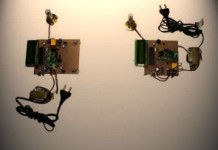Clamp or Compression Coupling


It is also known as split muff coupling. In this case, the muff or sleeve is made into two halves and are bolted together as shown in Fig. 1. The halves of the muff are made of cast iron. The shaft ends are made to abutt each other and a single key is fitted directly in the keyways of both the shafts. One-half of the muff is fixed from below and the other half is placed from above. Both the halves are held together by means of mild steel studs or bolts and nuts. The number of bolts may be two, four or six. The nuts are recessed into the bodies of the muff castings. This coupling may be used for heavy duty and moderate speeds. The advantage of this coupling is that the position of the shafts need not be changed for assembling or disassembling of the In the clamp or compression coupling, the power is transmitted from one shaft to the other by means of key and the friction between the muff and shaft. In designing this type of coupling, the following procedure may be adopted.
1. Design of muff and key
The muff and key are designed in the similar way as discussed in muff coupling (Art. 13.14).
2. Design of clamping bolts
Let T = Torque transmited by the shaft,
d = Diameter of shaft,
db = Root or effective diameter of bolt,
n = Number of bolts,
σt = Permissible tensile stress for bolt material,
μ = Coefficient of friction between the muff and shaft, and
L = Length of muff.
We know that the force exerted by each bolt
= π/4 (db)^2 × σt
∴ Force exerted by the bolts on each side of the shaft
= π/4 (db)^2 × σt × n/2
Let p be the pressure on the shaft and the muff surface due to the force, then for uniform pressure distribution over the surface,
p = Force / Projected area = {π/4 (db)^2 × σt × n/2} / {1/2 × L / d}
∴ Frictional force between each shaft and muff,
F = μ × pressure × area = μ × p × (1/2) × πd × L
= μ × {π/4 (db)^2 × σt × n/2} / {1/2 × L / d} × (1/2) × πd × L
= μ × {π/4 (db)^2 × σt × n/2} × π
and the torque that can be transmitted by the coupling,
T = F × d / 2 = μ × {π/4 (db)^2 × σt × n/2} × π × d / 2
= π^2/ 16 × μ (db)^2 × σt × n × d
From this relation, the root diameter of the bolt (db) may be evaluated.
Note: The value of μ may be taken as 0.3.
Reference A Textbook of a Machine Design by R. S. Khurmi and J. K. Gupta












